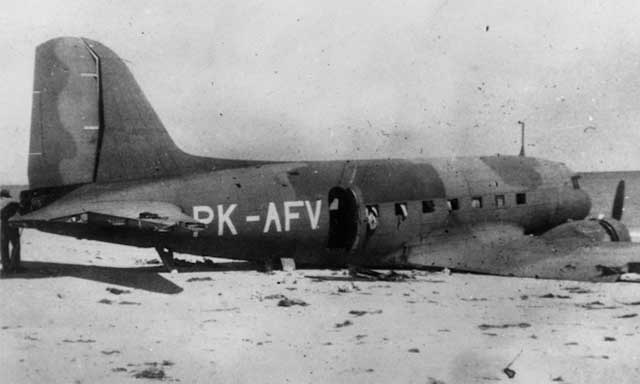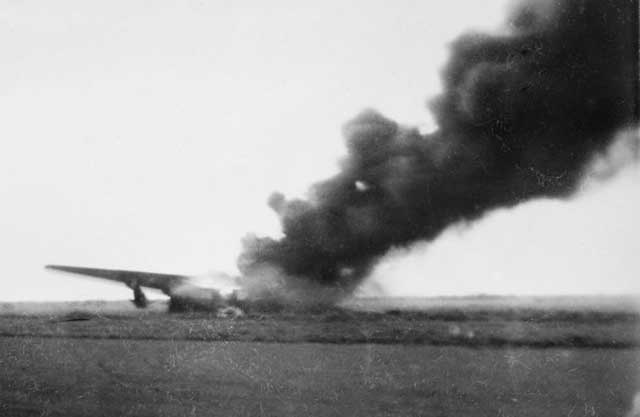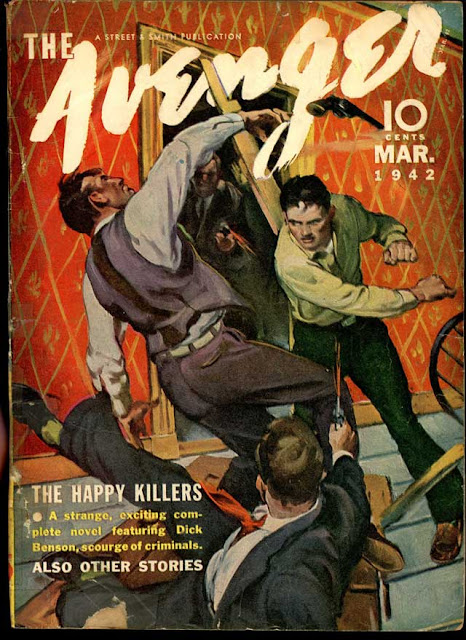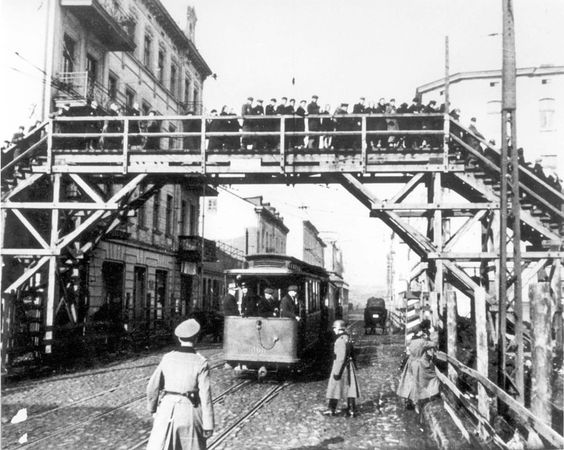Tuesday 25 February 1941
 |
| Captain Topp salutes the battle flag at the commissioning of the Tirpitz in Wilhelmshaven, 25 February 1941. |
Italian/Greek Campaign: British Foreign Secretary Anthony Eden and CIGS General Sir John Dill, in the eastern Mediterranean to arrange British protection for Greece, travel on
25 February 1941 from Athens to Ankara for talks.
East African Campaign: Operation Canvas is turning into a roaring success. South African and colonial troops have been advancing toward the main objective of Mogadishu for about two weeks. The Italians briefly made a stand on the Juba River line, but when that fell, their entire strategic position in Italian Somaliland collapsed. There remains little resistance anywhere. Today, The Italians declare Mogadishu an open city, and Nigerian troops capture nearby Afgoi with enormous stockpiles of supplies. Facing virtually no opposition, East African armored cars of the British 11th African Division drive 20 miles into Mogadishu, unmolested, during the day. Three specialist South African field security policemen parachute into the port to secure important communications equipment such as the telephone exchange.
The official handover of the city will be tomorrow, but today is when it actually changes hands. The capital of Italian Somaliland, Mogadishu is important for several reasons, not least the support that it can give to naval operations in the Indian Ocean. In addition, the Italians have 400,000 gallons of fuel oil in the port.
Another British force, the 12th African Division, continues pushing up the Juba River. Its aim is to clear all Italian opposition to the Abyssinian border, with the objective being the border town of Dolo. In Eritrea, the South Africans continue advancing south of Cub Cub, supported by the South African Air Force.
European Air Operations: During the day, the RAF conducts a Circus sweep over the opposite shore, attacking the submarine pens at Flushing. RAF Bomber Command attacks Dusseldorf after dark with 80 planes.
The Luftwaffe bombs Hull again, this time with 25 bombers beginning at 17:50 and lasting until just before midnight. The docks are hit, as well as railway lines. While daylight operations are light, JG 51 Kommodore Major Mölders shoots downs a Spitfire of RAF No. 611 Squadron. It is his fifty-ninth kill and second in about a week after a long lull.
 |
| The Tirpitz during its commissioning ceremony, 25 February 1941. This view is from the quarterdeck, the crew is lined up in parade formation. |
Battle of the Atlantic: While the Kriegsmarine's surface fleet never gets much respect, today it makes all the news with positive developments - though none strikingly important. While in a distinctly inferior position, the Kriegsmarine does have its days.
German battleship Tirpitz is commissioned. Its first skipper is Kapitän zur See Friedrich Karl Topp. The Kriegsmarine now has two true battleships commissioned, the Tirpitz and Bismarck, but the former will require extensive working-up and equipping. Despite being commissioned, it is not yet ready for combat. Topp (no relation to Erich) is an officer in the Kriegsmarine's shipbuilding department and not really suited to the command of a battleship. However, he does have combat experience: during World War I, he served as the first officer of SM UC-67 under the command of Martin Niemöller - a name you may recognize, but, if not, not really germane to this day's events. Two men who took vastly different paths in life after working together.
The Royal Navy abandons its search for German heavy cruiser Admiral Scheer in the Indian Ocean. Captain Krancke has disappeared into the vastness of the ocean to the southeast. After a long and very successful cruise, Captain Krancke is instructed to return to Germany via the Denmark Strait and Norway.
German E-boats attack Convoy FN 417 off the Lizard. S-30 sinks Royal Navy destroyer HMS Exmoor off Lowestoft. There are 104 deaths, including skipper Lt Cdr R. T. Lampard, and 32 survivors rescued by a patrol sloop and trawler. There is confusion about whether S-30 sank the Exmoor, or if it hit a mine, but it sinks one way or the other.
Norwegian 423 ton freighter MV Torgeir I hits a submerged object about 10 nautical miles off the Groningen Light House in the Skagerrak.
Prime Minister Winston Churchill sends a congratulatory note to the Import Executive for their success in salvaging damaged ships. He notes that there now are 30 salvage organizations, as opposed to 10 in August 1940. He also states that, while 340,000 gross tons of shipping were built in the final five months of 1940, 370,000 was recovered by salvage operations. He urges an increase in repair facilities.
British 54 ton sailing barge Globe hits a mine and sinks in the Thames Estuary off Garrison Point, Sheerness. There are two deaths.
German torpedo boats (Jaguar and Iltis) lay minefield Augsburg off Eastbourne.
Convoy OG 54 departs from Liverpool, bound for Gibraltar.
Royal Navy corvette HMS Nigella (K-19, Lt. Thomas W. Coyne) is commissioned, submarines HMS United and Unruffled are laid down.
U-180 is laid down.
 |
| The battle ensign and pennant are hoisted above the Tirpitz at its commissioning, 25 February 1941. |
Battle of the Mediterranean: British submarines have been lying in wait along the convoy lanes east of Tunisia between Naples and Tripoli, but with only middling success. There have been several unsuccessful attacks, a few minor sinkings, but nothing really significant. Today, though, they finally claim a major victim. HMS Upright (Lt. Edward Dudley Norman, DSC, RN) spots Italian light cruiser "Armando Diaz" east of Sfax (off the Kerkennah Islands) at 03:43 and sinks it. There are 464 deaths and 147 survivors. However, the silver lining for the Axis is that the vital transports that the cruiser was escorting, loaded with reinforcements for the Afrika Korps, continue on their way without interference.
About 200 British Commandos of Operation Abstention, the subjugation and occupation of the island of Kastellorizo in the southeast Mediterranean, are at sea as the day begins. The Commandos land at dawn and quickly ambush an Italian patrol between Capt Nifti and the port. This landing operation is Operation Mar2, a naval support operation from Suda Bay involving destroyers HMS Decoy and Hereward. The landing is botched, as there actually are 500 men on board, but eight of the ten boats from Hereward get lost in the darkness and return to Decoy. They eventually land after daylight.
The commandos successfully occupy the port and take the Italian radio station there. The Italians manage to get off a radio message to Rhodes before surrendering, however. This draws airstrikes by the Regia Aeronautica within a few hours. The Italians bomb gunboat HMS Ladybird, damaging it, wounding three sailors, and forcing it to retreat to Famagusta, Cyprus along with its 24 Marines. Armed boarding vessel HMS Rosaura, operating out of Alexandria, arrives late and is unable to land the troops it carries due to Italian air attacks. Light cruisers HMS Bonaventure and Gloucester patrol offshore but can offer little assistance to the shore party.
The situation for the British grows worse throughout the day, as the commandos lose radio communications and are punished by the airstrikes. Italian torpedo boats arrive after dark and attack the Royal Navy ships, but neither side manages any hits. With the Admiralty uncertain about the situation on the island, a secondary landing from Cyprus is canceled and diverted to Alexandria.
At Tobruk, the Luftwaffe continues its incessant attacks. The Germans bomb and damage 5856-ton British tanker Tynefield. One man is lost. The ship is badly damaged, losing its forecastle, and eventually heads to Alexandria.
The German success at mining the Suez Canal claims another victim. Royal Navy 268 ton Narval whaler HMS Sarna hits a mine while engaged in minesweeping operations and forces skipper C. Sarel RNR to run it ashore to keep from sinking. This at least keeps the channel from having to be closed. There are one death and one man wounded.
The Free French attack on the Italian fort of El Tag at Kufra Oasis continues. The French are shelling the fortress with a 75mm field piece and several mortars. The Italians in the fort, though numerous, do not respond with any effectiveness - though they have four 20mm cannon, 53 machine guns and over two dozen trucks in parked in the fort.
There is an air raid on Malta at 09:30 by the Luftwaffe. The Germans lose two Dornier Do 215s (similar to the Do 17, only for export), while the British lose a Hawker Hurricane offshore to "engine trouble," according to RAF sources. Oblt. Müncheberg of 7./JG 26 takes credit for the downed plane.
The RAF raids Tripoli.
 |
| Italian cruiser Armando Diaz, sunk off Tunisia today by HMS Upright. |
Battle of the Indian Ocean: German raider Orion gets supplies from captured supply ship Ole Jacob and heads from the Pacific to the Indian Ocean.
Anglo/Australian Relations: Churchill confides in a telegram to Middle East Commander General Wavell that the "Australian and New Zealand Governments have already been informed as was necessary" about the plans for an expedition to Greece. This buttresses the impression that Australian Prime Minister Menzies was not informed about the project in any detail until his arrival in London - at which point he was not enthusiastic about it.
Japanese/US/Anglo/Australian Relations: Japanese Foreign Matsuoka is reported by United Press as calling for:
the white race to cede Oceania - the vastly more than thousand mile square region South Pacific - to the Asiatics.
The press reports today are full of other bombastic statements from obscure Japanese sources. One, from a bellicose editorial in "Nichi Nichi," calls US and British efforts to strengthen their positions in the Pacific an "unwarrantable challenge to Japan" and that Japan could easily conquer Singapore and Guam in the event of a conflict. The Japanese Vice Foreign Minister Ohashi also denies that Matsuoka ever offered to mediate an end to the European conflict, instead claiming that it was simply an expression of love for peace, as indicated by Japanese mediation of the Indochina border war.
US Military: One in a long series of conferences is held in the Office of the Chief of Staff (George Marshall) at 10:00 in Washington, D.C. The
topic is the status of the fleet in Hawaii and its potential vulnerability to attack. Besides Marshall, in attendance are General Delos Emmons, General "Hap" Arnold, General Brett, General Spaatz, General Gerow, Colonel McNarney, Colonel Anderson, and Colonel Twaddle. Marshall begins the meeting by stating, "In view of the Japanese situation the Navy is concerned with the security of the fleet in Hawaii." Marshall notes that Admiral Kimmel at CINCPAC is worried that "the sea power of the United States might be jeopardized" due to "a surprise or trick attack." Marshall is concerned that there is not "a single squadron of modern planes in the Philippines" or in Panama. He also is concerned about the P-40 fighter planes, which "have some engine trouble which makes them dangerous flying over water."
Marshall's concerns, along with some others, are quite prescient. However, that is all they are - concerns. Marshall ticks off some plans to send some P-36 fighters to Hawaii but notes that delivery of other planes is delayed. Lieutenant General Emmons then ticks off several reasons why "We have little means to accomplish our plans in GHQ Air Force." These include officer shortages, plane shortages, and shortages of spare parts. He downplays the shortage of pursuit planes in Hawaii due to the "peculiar situation in Hawaii," where night attacks are effective due to "phosphorescence in the water." He concludes the conference by stating:
They will have no warning service until they get detectors and pursuit would be useless. I would have long range bombers and not send pursuit, but bombers.
The conference is striking in the way that everyone makes excuses for the Hawaiian islands not having sufficient fighters or other planes. The issue of aerial surveillance of the waters around Hawaii does not even come up.
Soviet Military: Viktor Abakumov, who returned to Moscow NKVD headquarters on 12 February for reassignment, officially becomes a deputy to Lavrentiy Beria, the People's Commissar for Internal Affairs.
Italian Government: Wild rumors circulate on Malta that Mussolini has placed Marshal Graziani, the former commander of Libya, under house arrest. However, the information on the island is the product of speculation and assumptions, not facts. Graziani remains free, though he has not been the commander in Libya since January - something the British do not yet know.
 |
| Regent Street, February 1941. Visiting Australian Prime Minister Robert Menzies comments that "traffic is almost normal." © IWM (D 2107). |
British Government: Australian Prime Minister Menzies spends an hour with the Queen. He finds her "as wise as possible, and has the shrewdest estimate of all the Cabinet." She agrees with Menzies about Churchill surrounding himself with "Yes-men," which no doubt confirms her intelligence to him. Menzies also confides to his diary that the Duke of Kent confides to him that Churchill "has 6 ideas a day; they can't all be right."
Sir Basil Newton, British Ambassador to Baghdad, sends Foreign Secretary Anthony Eden a letter about developments in the Arab world. Newton states that the Grand Mufti of Jerusalem is prepared to initiate a rebellion in Iraq in support of Germany. His condition is that Germany issue a declaration against Zionism, specifically any Jewish homeland in Palestine, and in favor of a pan-Arab state. There have been some low-level contacts between the Mufti and German Foreign Minister Joachim Ribbentrop, and the Mufti is preparing an office in Berlin to conduct propaganda and espionage operations.
 |
| Dutch tram cars such as this one sit in their terminals, 25 February 1941. |
Dutch Homefront: Today, pursuant to decisions made at an open-air meeting in Amsterdam on the 24th, a general strike begins. This is in response to a list of grievances by the local community, including the creation of a Jewish Ghetto in Amsterdam and the taking by the Germans of hundreds of Jewish hostages. The hostages, all males between the ages of 20-35, have been sent to concentration camps. Amsterdam tram drivers begin the strike, and it quickly spreads to government, companies, and schools. The strike also spreads beyond Amsterdam to Utrecht, Zaanstad and other cities. Local SS Chief Hanns Albin Rauter, repeating similar tactics adopted in Prague in 1939, orders his men to open fire on the strikers: 11 men perish. This is the only direct action against the German treatment of Jews in Occupied Europe during World War II. The strike is in full effect when the day ends.
British Homefront: The American Junior Red Cross has sent 10,000 boxes of gifts to British children suffering as a result of the Blitz. Today, film star Mary Clare hands out some of the gifs to children at the Regal Cinema in Streatham.
American Homefront: Paramount Pictures releases "The Lady Eve," written and directed by Preston Sturges. Starring Henry Fonda and Barbara Stanwyck, "The Lady Eve" is about romance on an ocean liner. In 1994, the film will be selected for preservation in the United States National Film Registry by the Library of Congress as being "culturally, historically, or aesthetically significant."
Columbia Pictures releases "Meet Boston Blackie," directed by Robert Florey and starring silent film star Chester Morris and Rochelle Hudson. While largely forgotten by the 1950s, the character of "Boston Blackie" is a popular cinematic jewel thief with, you guessed it, a heart of gold. This B movie proves strikingly successful with audiences, if not with critics, and leads to a long string (14) of "Boston Blackie" films that stretches throughout the 1940s.
 |
| Strike notices distributed by the outlawed Communist Party of the Netherlands in Amsterdam, 25 February 1941. |
February 1941 February 1, 1941: US Military ReorganizationFebruary 2, 1941: Wehrmacht SupermenFebruary 3, 1941: World Will Hold Its BreathFebruary 4, 1941: USO FormsFebruary 5, 1941: Hitler Thanks Irish WomanFebruary 6, 1941: Operation SunflowerFebruary 7, 1941: Fox Killed in the OpenFebruary 8, 1941: Lend Lease Passes HouseFebruary 9, 1941: Give Us The ToolsFebruary 10, 1941: Operation ColossusFebruary 11, 1941: Afrika KorpsFebruary 12, 1941: Rommel in AfricaFebruary 13, 1941: Operation CompositionFebruary 14, 1941: Nomura in WashingtonFebruary 15, 1941: Churchill's WarningFebruary 16, 1941: Operation AdolphusFebruary 17, 1941: Invade Ireland?February 18, 1941: Panzerwaffe UpgradeFebruary 19, 1941: Three Nights BlitzFebruary 20, 1941: Prien's FarewellFebruary 21, 1941: Swansea Blitz EndsFebruary 22, 1941: Amsterdam PogromFebruary 23, 1941: OB-288 Convoy DestructionFebruary 24, 1941: Okuda SpiesFebruary 25, 1941: Mogadishu TakenFebruary 26, 1941: OB-290 Convoy DestructionFebruary 27, 1941: Operation AbstentionFebruary 28, 1941: Ariets Warns Stalin2020

































